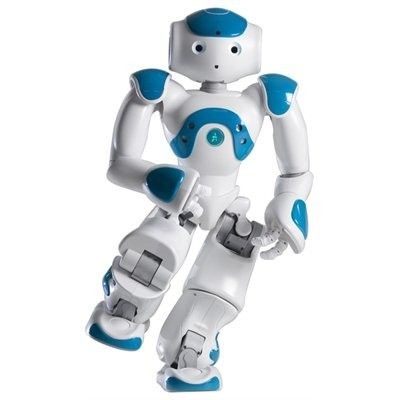
Meet Plen2, an adorably cute humanoid robot that’s small enough to stand on your desk. This bot can bust a few moves, such as dancing, carrying small objects and even copying human movements (when used in conjunction with additional sensor suit tech).
It’s also open source and 3D printable — or that’s the plan for Plen, the Japanese company behind the prototype, which is hoping a little customization will spark the beginnings of a beautiful friendship betwixt humans and humanoids.
The team is currently raising crowdfunds on Kickstarter to get Plen2 to market, and have passed their $40,000 target with another 43 days left of their campaign to run — so have enough money pledged to turn their open-source robot dreams into a printable commercial reality.
Pay $499 and you’ll get the electronics (control boards, servomotors, accessories, etc.) and 3D parts’ data to 3D print your own Plen2. Or else you can pay for the full kit, costing from $699, for DIY assembly. Or $799 for a pre-assembled Plen2. The firm is aiming to ship kits and bots to backers later this year, starting in August or November (depending on which kit/bot you’ve ordered).
Naohiro Hayaishi, who’s in charge of product development for Plen, says the company developed its original Plen bot in 2005, but last year started working on the follow up. Plen2 is smaller, and the big push here is on open sourcing its hardware so people with access to 3D printers will be able to print their own parts — and feel more connected to the robot, given they’ll have had a hand in building it.
Partly this is about creating an education tool, says Naohiro, noting that the company is in the process of creating an educational program around Plen2 with various partners. But the grander — and more socially intriguing — goal here is to humanize robotics technology. “Our aim is to open up the relationship between humans and technology through printable and open-source robot kit,” is how the team puts it on their Kickstarter campaign.
Going down a crowdfunding route is thus also about Plen reaching out to a community of humans willing to adopt its bots — and take the technology to heart. “We want people know about and join to the process for making robot. This is also the reason why we have preferred the concept of open-source and printable,” says Naohiro.
“Plen2 can move smoothly, same as Plen1. This is the most important thing for us, since we believe that robot must not scare people,” he adds.
It’s certainly a cute idea, and one that flies in the face of well-worn robot dystopia tropes. It’s also no accident that this is a Japanese project, given the domestic push to develop robotics for caring functions. Japanese telecom giant SoftBank has, for instance, been developing a robot that’s apparently capable of learning and expressing emotions.
The country has an aging population which is one reason why there has been a domestic push to accelerate social acceptance of robots and robotics technology. And why Plen has opted for full on kawaii with its bots.
What’s left to do at this point to get Plen2 to market? It needs to be redesigned so that its injection molding can be mass produced, according to Naohiro, and also to ensure its parts are structured so they can be viably 3D printed. The team is also working on developing iOS and Android apps for remote-controlling Plen2.
Plen2 can apparently operate for 20 to 30 minutes on a single charge. Cute form and function aside, a limited battery life remains a very solid way of reassuring humans that robots aren’t really so scary.



